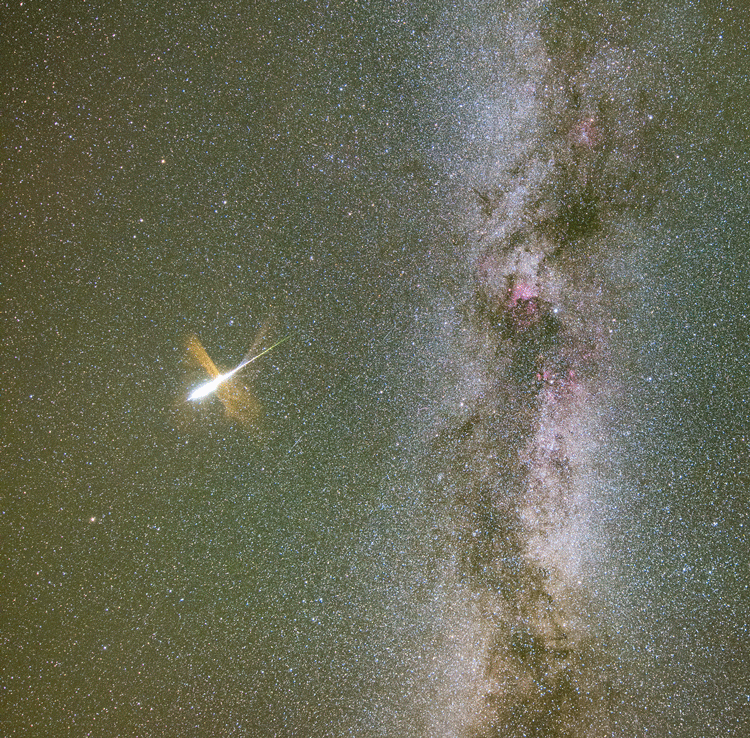
Tonight the Perseid Meteor Shower reaches its maximum. Grains of icy rock will streak across the sky as they evaporate during entry into Earth's atmosphere. These grains were shed from Comet Swift-Tuttle. The Perseids result from the annual crossing of the Earth through Comet Swift-Tuttle's orbit, and are typically the most active meteor shower of the year. Although it is hard to predict the level of activity in any meteor shower, in a clear dark sky an observer might see a meteor a minute. This year's Perseids occur just before a new Moon and so the relatively dark sky should make even faint meteors visible. Meteor showers in general are best be seen from a relaxing position, away from lights. Featured here is a meteor caught exploding two weeks ago above Austria next to the central band of our Milky Way Galaxy. via NASA http://ift.tt/1DLQVSs
No comments:
Post a Comment